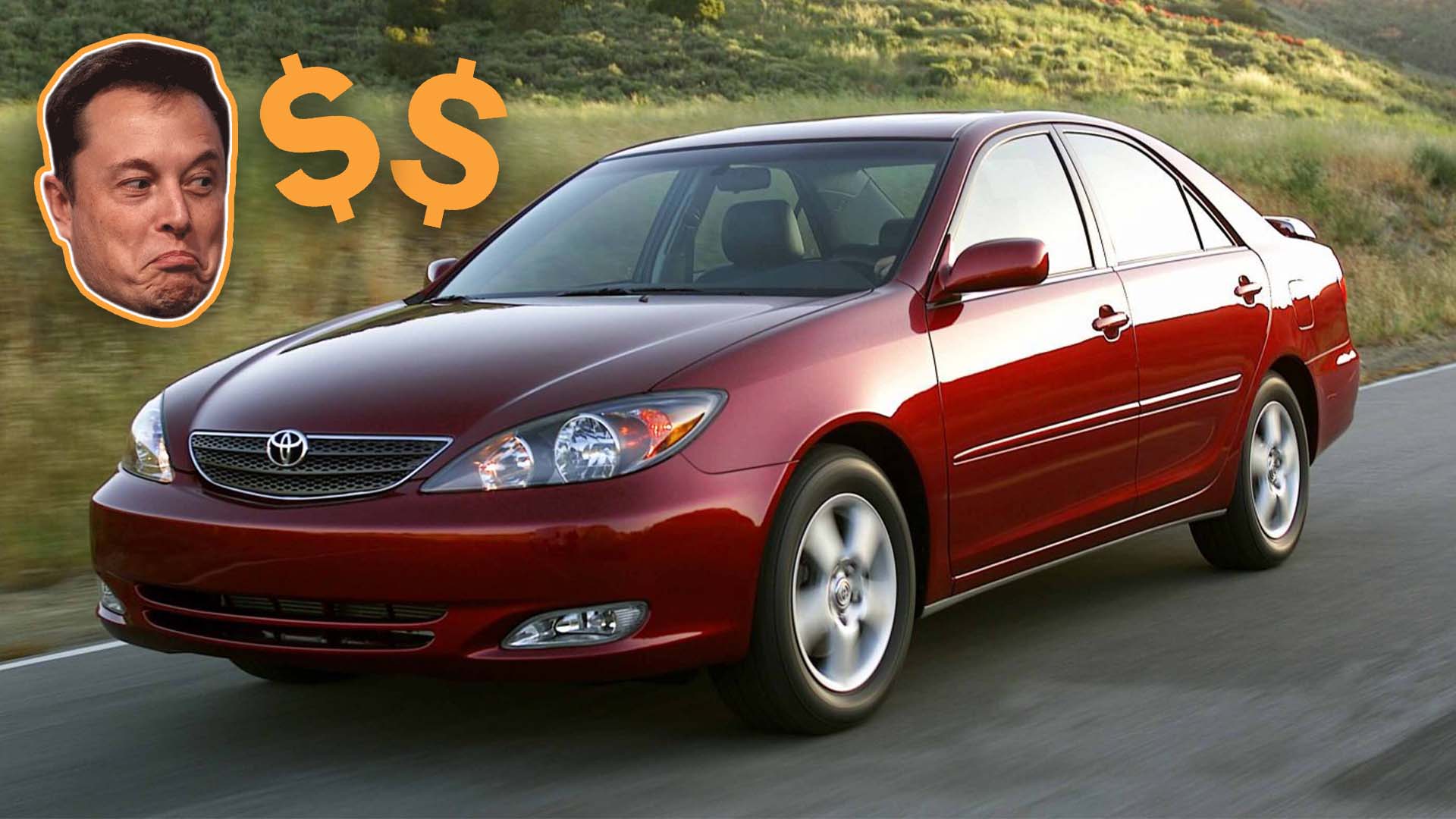

The world awoke to a shock this morning when Tesla CEO Elon Musk offered to buy Twitter for $43 billion. How convenient is that for an executive whose car company has recalled over 594,000 cars this very morning? Anyway, there are a hell of a lot of ways to spend $43 billion, from fixing the water supply in Flint, Michigan to taking on the U.S. housing crisis. But this is a whimsical guy we’re talking about, a man who sent his car to space and made others fart their way from zero to 60 mph in two seconds. He can use his fortune however he wishes, and given his goal of replacing all internal combustion cars with electric vehicles, we wondered: could Elon Musk buy every Toyota Camry on the planet?
According to our admittedly rough math, yep, he totally could.
To prove this, we need to estimate how many Toyota Camrys are out there today and their approximate average market value. Spitballing will be the order of the day, as the necessary data simply doesn’t exist or would take weeks to compile, so I’m going to make a few educated estimates that I don’t think you’ll object to.
First off, the Camry count. Toyota built its 10 millionth Camry last July, having previously passed three million in 2000, meaning it has built an average of about 318,000 Camrys in each year of the new millennium. It stands to reason that pace has slowed with the rise of crossovers, so it feels a safe assumption that Toyota has built only around 200,000 since July, for a running total of 10.2 million Camrys. That’s all of them built worldwide—US sales numbers aren’t enough here—since 1982, when the Camry became a standalone model and not just a trim of the Celica.

Obviously, many of those Camrys haven’t made it to 2022, the majority of the older ones having rusted away, been crashed, jumped over highways, or broken down beyond repair over decades of use. Aggregated international registration data isn’t available, but it seems a fair assumption that five percent of those built before 2000 remain—so, 150,000 cars. Camrys built since then should still be on the road (if they’re properly cared for, at least), but crashes and poor maintenance happen, taking a fair number out of service before their time. Let’s assume 65 percent of those newer 7.2 million remain, or 4.68 million, which combines with older cars comes to a total of 4.83 million.
With $43 billion to spend, Musk would need to secure every Camry built from 1982 to 2022 (happy 40th!) for an average of $8,903 apiece. Three years ago, when one could find reliable transportation for only a few grand, that might’ve been feasible, as long as we agree to pretend one dude buying up every Toyota Camry in existence wouldn’t do weird things to their value. But COVID-19 shifted the world’s course, disrupting supply chains and pinching the supply of new cars, which in turn strained the used market and drove up prices. As a result, the price for any Camry, used or new, has averaged $21,162 in 2022 according to iSeeCars. At that price, Musk’s $43 billion could only buy two million of the world’s estimated 4.83 million Camrys—though that’d still make him the world’s biggest Toyota collector, among other things.

If Musk were willing to shed a few dozen more of his $265 billion, he could still buy them all, and after all, what’s money to a man who gave up all his private possessions to live in a shack, and dedicate his life to bettering the world? Wait, you mean he still regularly buzzes around on his private jet? And tried to buy the silence of the Twitter account that tracks his travels? Huh. Maybe that explains why he’s trying to buy Twitter. Can’t tweet unflattering things about Elon Musk if you can’t tweet at all, can you?
Got a tip or question for the author? You can reach them here: james@thedrive.com